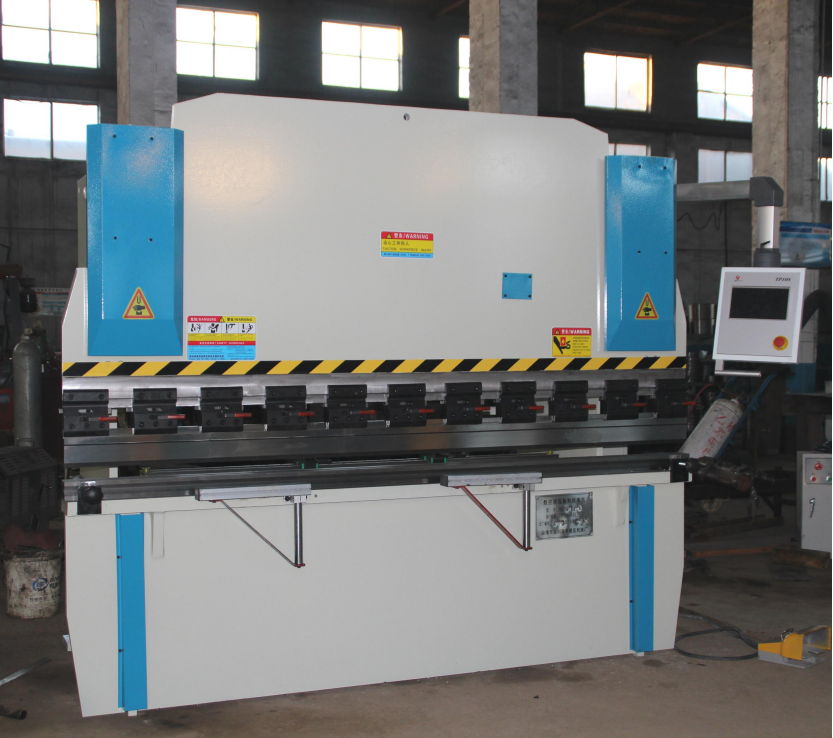

We are a professional manufacturer of bending machines with over 10 years of industry experience. Today, we would like to introduce you to the principle of material rebound in bending machines:

Bending processing is one of the important processes of sheet metal forming, widely used in machinery manufacturing, automotive, aerospace and other fields. In the bending process, the metal plate undergoes plastic deformation under the pressure of the upper and lower molds to form the desired bending angle. However, when the external force is unloaded, the workpiece tends to rebound to a certain extent, resulting in deviations between the actual bending angle and the angle designed by the mold. Understanding the principle of material rebound is crucial to improving the accuracy of bending processing.
1, The physical nature of the rebound phenomenon
The essence of rebound is the recovery of elastic deformation of metal materials. In the bending process, the metal plate is deformed under the action of external force, and its internal stress distribution presents an uneven state. The side near the convex mold (inner layer) is subject to compressive stress, and the side near the concave mold (outer layer) is subject to tensile stress. When the material stress exceeds the yield strength, plastic deformation occurs; but at the same time, the material still retains part of the elastic deformation. When the bending force is withdrawn, the elastic deformation is partially restored while the plastic deformation is partially retained, so the workpiece will partially spring back, resulting in an increase in the bending angle or a change in the radius of curvature.
There are two main forms of springback: one is angular springback, i.e., the actual angle after bending is greater than the theoretical angle set by the mold; the second is curvature springback, i.e., the bending radius is greater than expected. These two rebound phenomena often exist simultaneously, affecting the final shape of the workpiece.
2, The main factors affecting the rebound
The degree of rebound is affected by a variety of factors, including material properties, process parameters and mold design.
(1) Material properties
The mechanical properties of the material have a decisive influence on the rebound. Materials with higher yield strengths, such as high-strength steels and stainless steels, have a greater percentage of elastic deformation, and the amount of rebound is usually more significant than for mild steels. The modulus of elasticity of the material is equally important; the higher the modulus of elasticity, the stronger the rebound tendency. In addition, the thickness of the material also affects the rebound, with thicker plates having a relatively small rebound due to their greater stiffness.
(2) Process parameters
The setting of the bending process directly affects the degree of springback. At slower bending speeds, the material has more time to flow plastically and rebound may be reduced, while higher speed bending may result in greater elastic recovery. The amount of bending force is also critical; if the pressure is insufficient, the material will not deform plastically enough and rebound will be more pronounced. In addition, factors such as die clearance and lubrication conditions can indirectly affect springback behavior.
(3) Mold Design
The shape and size of the mold has a direct effect on springback. A smaller radius of the mold fillet usually results in greater plastic deformation of the material, which reduces rebound. The size of the mold opening (V-groove width) also affects rebound, with narrower grooves exerting a greater restraining force and reducing the amount of rebound.
3, Common methods to control springback
In order to reduce the impact of springback on machining accuracy, the industry usually uses the following methods:
(1) Mold Compensation Method
The most direct method is to pre-estimate the amount of rebound at the mold design stage and adjust the mold angle in reverse. For example, if rebound is predicted to increase the angle by 2°, the mold angle can be reduced by 2° to bring the final part to the target angle. This approach requires extensive experience or numerical simulation support.
(2) Process optimization
Adjusting the bending parameters can effectively inhibit rebound. Increase the bending force or use multi-step bending process, so that the material is fully plastic deformation, reducing the elastic recovery. In addition, appropriate reduction of bending speed, optimization of die clearance and lubrication conditions can also improve the rebound problem.
(3) Material Pretreatment
In some cases, the mechanical properties of a material can be altered by heat treatment or cold hardening to make it easier to shape plastically, thereby reducing springback. For example, annealing of high-strength steel can reduce its yield strength and improve formability.
(4) Computer simulation-assisted prediction
Modern bending processes often use Finite Element Analysis (FEA) software to simulate the rebound behavior, predict possible angular deviation in advance, and optimize the mold design and process parameters to reduce the cost of trial and error.
Springback is an unavoidable phenomenon in the bending process, and its root cause is the elastic recovery of the material. By analyzing the material properties, optimizing the process parameters and improving the tooling design, the springback can be effectively controlled and the precision of the bent parts can be improved. With the development of computational simulation technology and intelligent bending equipment, springback prediction and compensation will be more accurate, further improving the quality and efficiency of bending processing.
If you are interested in bending machine, please contact us.
 Address:Room 1202, Detaitang Building, No. 118 Huaguang Road, Zhangdian District, Zibo, Shandong
Address:Room 1202, Detaitang Building, No. 118 Huaguang Road, Zhangdian District, Zibo, Shandong WhatsApp:+8615653328535
WhatsApp:+8615653328535 Wechat: +8615965331535
Wechat: +8615965331535  E-mail:zs@sdsmachinery.com
E-mail:zs@sdsmachinery.com